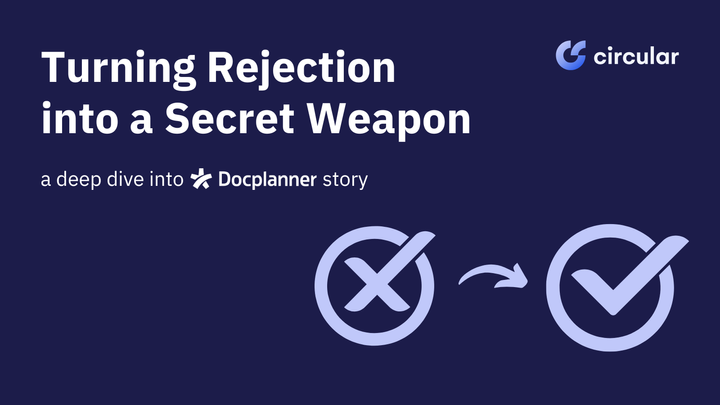9 Often-Neglected Obvious Things in the Candidate Experience

- This article was written by Belén Bueno. People, Talent & Culture at Paradigma. Thanks for sharing such interesting content with us.
“A diamond is forever” is a well-known marketing and advertising slogan. Although seven decades have passed since the original advertisement (De Beers, 1948), it is still being used. It is fascinating to see how an advertising campaign managed to create a new social rite and made us associate diamond rings with commitment. For those who enjoy reading about such curiosities, I recommend an article in GQ Magazine that talks about the 10 most well-remembered slogans.
For me, 2018 was rich in learning and new experiences. It is a year that I will always remember with affection and a certain nostalgia. I had the chance to experience, first-hand, the 3C’s of a hiring process: Customer, Candidate, and Consultant. This helped me reconnect with the candidate experience.
However, before sharing this experience with you, allow me to clarify some points:
- I do not intend to lecture anyone. As the post title suggests, this article is about obvious things that are sometimes neglected.
- I do not intend to criticize anyone, either. So, I will not share the names of professionals or brands. But I would be happy to provide private feedback to anyone who feels that they have been personally mentioned.
- I do want to awaken curiosity and to get us to question some of those HR initiatives that we bring to the business. Have you asked yourself lately how a candidate would rate their experience with your hiring process?
Returning to the topic at hand, the diamond slogan and commitment, I would like to say: I do! I do want to commit to improving the Candidate Experience! No matter what “C” I may be.

As a customer
- If there is no rapport with the firm or consultant, there won’t be understanding, and they won’t know what your real needs are or what exactly you are looking for. Thus, it will be more difficult for them to find what you are searching for.
- “The client is (not) always right”. In the realm of talent attraction management, the consultant has a much broader and diverse view of the market. To make the most of the collaboration, it’s better to have an open, learning-focused, and modest mindset. In many areas of our lives (restaurants, bookstores, shops, etc.), we don’t ask for what we don’t know, so why would we do this with our Talent Attraction Consultant?
- There is life beyond the resume. A satisfactory career track record, which is the only thing that the traditional resume reflects, does not guarantee success. More importantly, it does not reflect the professional’s potential or talent.
- Innovate and experiment. Talent Acquisition and Learning & Development are two areas where you can be more creative and innovative when it comes to managing people. Tools such as gamification, virtual reality, chatbots, mobile recruitment, video resumes, etc. can be very useful.
- Collaborate. Work hand-in-hand with Marketing and Communication to align the product or service brand with the Talent Brand.
As a consultant
- Challenge and inspire the client. While it is true that the client is who best knows their business and culture, as a consultant, you must be able to inspire them, contribute knowledge, and also challenge them to open their minds. Many valid candidates don’t reach the client because the initial role definition isn’t very flexible.
- Understand what they are looking for and for what role. It is necessary to confirm, investigate, and verify the needs of the client and understand their culture and way of working. We will be able to add value to the process with our market knowledge and profiles.
- Don’t forget that you look for a profile, but you select and hire a person. It isn’t just another file.
- Attitude vs. aptitude. Introduce the candidate that fits in best with the company’s profile and culture, not “the best one”. If you don’t, you may cover the position and reach your KPIs, but it will create frustration and you may lose a customer.
- But remember, attitude isn’t everything, because, how many of you would be okay with getting operated on by someone with great desire and motivation who is not a doctor?
- A person’s digital fingerprint sometimes says more about them than their resume. That’s why a good recruiter always looks beyond the resume and tracks the digital fingerprint we all have (social media, Google, etc.).
Now for the 9 often-neglected obvious things that, as a candidate, I like to see:

Before the hiring process
1. The value of simplicity. In the job description and posting, less is more. I value clear, specific, and attractive descriptions. Long descriptions of the duties, requirements and skills overwhelm the candidate, and “passive” talent may not be attracted to the position.
2. Be honest with your brand image. Show consistency and the real values of the company, don’t pretend to be what you’re not. Have a unique employer branding strategy aligned with the brand on every digital channel where you have a presence (website, company LinkedIn page, social media, job platforms, etc.).
3. Provide an agile application form, please. Ideally, it should be connected to LinkedIn or allow the candidate to attach their resume. The worst thing you can do is redirect the candidate to a job platform where they must register as a user, create a password, fill in 3-4 pages, and verify that they are not a robot!
4. 1st feedback: a customized message is recommended to confirm that the job application has been received. Also, take this opportunity to share the following steps of the process with the candidate. This should be sent within 24 hours.
The golden rule for LinkedIn: if you connect,and they write to you, answer them!
The massive number of requests or emails you get is no excuse to do otherwise. Believe me, a wrong first impression with a contact through LinkedIn is very difficult to change later on. If you publish a post as an expert and then you are not consistent with your actions, in the end, you lose credibility as a professional. Also, you won’t attract any talent this way.
During the hiring process
5. A phone interview is done to check availability and shouldn’t last more than 15 minutes. First, ask if it is a suitable moment for the candidate to take the call. Don’t take for granted that they have time for you at that exact moment. Remember, this is the first contact to check basic information and availability such as “you are currently working, you are interested in the project and want to know more, etc.”. This call is not intended to try to learn everything about the candidate at once, which by the way conveys hastiness and a lack of professionalism to the candidate. Don’t make them feel as if they were just one more task on your to-do list.
If you end the call by scheduling an interview, send a confirmation after the conversation by email or another contact channel (WhatsApp, LinkedIn, etc.). Include the date, time, and address, even if these were mentioned during the call – maybe the candidate couldn’t take notes.
6. In the interview, the same amount of time is required from both of you. Punctuality, professionalism, and personalization are required. I know that the volume of applications is massive, and sometimes organizing information can be very tricky. However, addressing the candidate by their name (how obvious, right?) makes them more receptive and makes them feel more valued.
How much should I talk and how much should I ask?
Regarding the amount of time each party should speak in an interview, I would give a maximum of 25% of the time to the interviewer and the remaining 75% to the interviewee. If it is the other way around or very disproportionate, one of the two will have wasted their time.
7. Test time. The test must be customized to fit the position, level of responsibility, and type of organization. Virtual intelligence and chatbots can be very useful for junior profiles and massive hiring processes where candidates need to be filtered based on objective information. However, it is not recommended for positions that require more experience and other skills.
8. Follow-up and feedback: communicate with the candidate at least once a month on where they stand in the hiring process. This will also allow you to keep track of their current situation and interest in the position.
9. Not communicating is the worst communication: we must inform everyone who has taken part in the hiring process whether they are finalists. If we fail at communicating, it generates a perceived lack of professionalism and a legion of detractors of your brand. Do you know Glassdoor? It’s like TripAdvisor, but for companies. Although it lacks a more rigorous validation of feedback, it contains real candidate and employee opinions.
If this person is the one to be hired, the recruiter’s proactivity is well appreciated. Let the candidate know the next steps to take and how to formalize the offer. They don’t want to be the ones who to chase after you on these matters. The recruiter will be the main interlocutor, even during the onboarding phase.
If the person is NOT the right fit, it is important to tell them the reason why they weren’t selected. You can always offer them the chance to receive more feedback; it may help them in other selection processes.
After the hiring process, the onboarding process is key for improving the Candidate Experience. I would need another post to talk about it, but still, I would like to say that
“employees with a strong commitment to their companies always remember their first day at the company as a key moment in their Employee Journey”.
So, take care of that day, follow up, ask for feedback to improve the process, be a good host, accompany them on their experience, and create a network of internal recruiters / referrals within your own company**.** Talent calls Talent.



